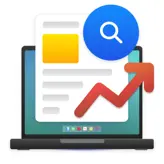
Seasonal SEO: A Guide to Mastering the Fluctuations
Published June 14, 2024
This week, we extend our thanks to Mary Mutua, B2B SEO writer and consultant, who has produced a guide to seasonal SEO so that you can maximize leads and sales even in off-peak periods. Plenty to learn here, especially for those in ecommerce!
Digital marketing has become synonymous with change. We're seeing new algorithms and changes in user behavior, not to mention the numerous AI disruptions.
But amidst these constant shifts, one thing is predictable. Seasonality.
It is possible to predict with high certainty how search queries and user intent correlate with different seasons. By adapting, you can maximize traffic and conversions during peak periods and counter the drops associated with off-peak periods.
This comprehensive guide dives deep into the world of seasonal SEO. We'll explore strategies and tools to identify seasonal search trends and optimize your website for peak performance in all seasons.
Join our free 4-part on-demand Ecommerce SEO Auditing course to take your ecommerce SEO to the next level!
Contents:
- What does seasonal SEO mean?
- How important is seasonal SEO?
- How to understand seasonal search trends?
- Beware seasonal trends when analyzing SEO data
- How to optimize your website for seasonal fluctuations
- Tips for creating your seasonal SEO strategy
- How to monitor & analyze seasonal SEO performance
What does seasonal SEO mean?
Seasonal SEO is preparing your website for predictable fluctuations in search trends.
The aim is to look at how popular your products or services are at different times and optimize your website to capture the most traffic at peak times, while coming up with strategies to plug the gaps during off-season.
Seasonal SEO strategies can be categorized into two types:
- Time-based: Focusing SEO on larger seasons within the year, like summer or winter, or a specific month.
- Event-based: Centering your optimization efforts around events like Superbowl, Black Friday, Valentine’s Day, etc.
How important is seasonal SEO?
Optimizing for seasonality helps you boost conversions and sales when your products are most likely to be bought. Using a seasonal SEO strategy provides several benefits:
- Capitalizing on trends: As different seasons change consumer behavior and interests, you align your business to get more traffic and conversions.
- Driving targeted traffic: When users begin to actively search for information related to your products at a specific time of the year, you can capture a significant portion of the higher-quality traffic.
- Remaining competitive: At the end of a season, you can avoid huge dips in traffic by re-optimizing your marketing efforts accordingly.
- Improve relevance and engagement: Creating seasonal content demonstrates to your audience that your brand is current and relevant. You can also increase engagement by providing timely and useful information that meets their current needs and interests.
How to understand seasonal search trends
Search behavior isn't static. People's needs, wants, and interests change with the seasons, affecting search trends. For instance, you'll see a spike in searches related to gift ideas and deals during the festive season.
By mastering seasonal SEO, you just don't anticipate holiday shopping spikes. You optimize your online presence to tap into all cycles of consumer behavior year-round.
Let's look at the tools you can use to identify if your products experience seasonal popularity and search terms that can give you the most significant traffic.
1. Google Trends
This free tool by Google is a fantastic starting point. You simply enter keywords related to your product and see how search interest fluctuates over time. You can even compare keywords to identify seasonal trends.
Here's how to make Google Trends work for you:
- Type in relevant topics like "patio furniture" to identify patterns and peaks during the year.
- Compare related topics to see which has a steeper spike in the peak period. E.g., "outdoor furniture" vs. "rattan furniture."
- Refine your geographical region searches. Let's say you notice a regional spike in searches for "patio umbrellas" in Arizona in June, you can create and publish targeted content for the Arizona audience during that time period.
- Compare different time frames (1 month, 90 days, 1 year) to gauge interest over time.
- Explore related queries and use them in your SEO content. For example, maybe "outdoor fire pits" or "solar string lights" will trend alongside patio furniture.

2. Google Search Console (GSC)
Here's how you can identify seasonal dips or peaks in traffic for specific product pages on your website using Google Search Console:
- Open the "performance" report on your Google Search Console to see how your website appears on search results.
- Customize the date range on the "performance" report to at least a year.
- Use the "Pages" tab to filter the results specifically for your product pages and isolate traffic data from relevant pages.
- Analyze trend metrics like impressions, clicks, and click-through rate (CTR) within the date range. Look for significant fluctuations or recurring patterns that might indicate seasonal trends.
- Seasonal trends often manifest as recurring dips or peaks around specific times of the year. Remember to compare the current year's data with the same period from the previous year to solidify seasonal patterns.

3. Semrush
Using Semrush, you can monitor specific changes in keyword search volume, competitor analysis and even track the position history of your website for those keywords.
To detect your website's seasonal fluctuations, go to "positions" under the "Organic Research" section. Here, you can track your website's ranking for relevant keywords over time.
Set the date range to at least a year to identify seasonal trends. The keywords that show significant ranking fluctuations throughout the year are likely to have a seasonal search volume.
You can also check traffic trends and identify recurring dips or spikes coinciding with particular seasons in the "Organic Traffic Analytics" section.
If you have a paid Semrush plan, the "Sensor tool" dissects website traffic fluctuations to show you seasonal patterns, while comparing your traffic to industry benchmarks, to give you a more comprehensive seasonal SEO understanding.

4. Sitebulb
While Sitebulb focuses on technical SEO auditing, you can combine it with other tools to glean insights into seasonal SEO.
For instance, Sitebulb's website search traffic report can help you identify pages that are not receiving traffic at different times of the year. By understanding seasonality, you can determine whether the lack of organic traffic is due to fluctuations in search trends or other SEO issues.

You can also leverage Sitebulb's integration capabilities with external SEO tools like Semrush or Ahrefs and analyze your website's seasonal trends further.
5. Ahrefs
Ahrefs offers a robust set of features that can help you identify seasonal SEO trends and optimize your website accordingly.
Here's how you can leverage Ahrefs' tools for seasonal SEO:
- Use Ahrefs' Keyword Explorer to look for relevant keywords for your niche. The Keyword Explorer has a built-in "Seasonality" filter that shows a keyword's search volume trend throughout the year.
- Navigate to the "Organic Traffic" section for recurring dips or spikes in traffic that coincide with specific seasons.

- Monitor the "Top Pages" report to see how your top-performing pages fluctuate during specific seasons.
- Use Ahrefs' Content Gap analysis tool and filter using the "seasonality" feature to identify relevant seasonal keywords in your competitors' content.
Expert take: Beware seasonal trends when analyzing SEO data
I chatted with Munene Mumbi, SEO Manager at WordLift, about the seasonal awareness that’s needed when analyzing SEO data. He said, “Seasonal trends are not always obvious. Failing to consider them when analyzing site traffic or creating an SEO report could end up wasting a lot of your time and resources”—for example:
- Solving a problem that doesn’t exist: Trying to find a solution to a traffic drop caused by a seasonal trend.
- Focusing on the wrong SEO efforts: When you scale up your current SEO efforts, assuming they were the cause of your traffic increase rather than a seasonal trend.
“At WordLift, we recently discovered a drop in organic traffic on a client’s website that deals in leasing private jets. We initially assumed the latest March Core Update was causing this but it was odd that the drop began in February 2024 – before the Google update.
“Upon further investigation (with seasonal trends in mind), Google Trends revealed that the search trend for ‘private jet’ rose sharply around the Superbowl period and then went back to normal after the event, hence the drop in our client’s site traffic.
“This saved us hours of trying to come up with a strategy to help the client recover from the March Core update.”

How to optimize your website for seasonal fluctuations
Once you understand how user search intent changes throughout the year, you can tailor your content strategy accordingly.
Let's look at various ways you can optimize your site for seasonal fluctuations.
1. Optimize your content for seasonal trends
Here are ways you can incorporate seasonal trends into your website content:
- Target relevant keywords with seasonal intent: Using the tools we've highlighted above, identify the popular products or services during specific seasons and use them to create fresh, seasonal posts and articles.
- Update existing content with seasonal information: Review and update existing content for the season by incorporating relevant keywords and phrases. For example, a general gift guide can be reviewed with a dedicated "Mother's Day gift ideas" section during the spring.
- Capitalize on seasonal offers and promotions: If you're offering discounts and other seasonal deals, showcase them on your website (e.g., pop-ups and banners) with compelling calls to action.

- Keep it specific and up-to-date: Remember to update and refresh your seasonal content from year to year to capitalize on the newest trends and ideas.
- Segment your seasonal campaign: Your campaign should be divided into ramp-up, engage, and slow-down periods, with messages tailored to each for maximum engagement and conversions. We'll look at this in detail below.

2. On-page optimization
Just like with content, you can attract more targeted traffic with on-page optimization for seasonal SEO. This involves using seasonal keywords on your title tags, meta descriptions, and header tags.
Here's how to go about it:
Title Tags
- Include relevant seasonal terms. E.g., "Summer," "Spring cleaning," "Back to school," and "Holiday gift guide".
- Combine seasonal keywords with your products or services. E.g., "Best Summer Sandals for Women 2024" or "Holiday Gift Ideas for Tech Lovers."
- Optimize existing title tags with seasonal keywords. E.g., "Women's Sandals" --> to "Top-Rated Women's Sandals for Summer 2024"
Example:

Meta Descriptions
- Keep it relevant to your chosen seasonal keywords and include a call to action. E.g., Discover the most memorable and successful Valentine's Day marketing campaigns in 2024.
Header Tags
- Use H1 for the main seasonal focus term.
- Incorporate seasonality in lower headers (H2& H3) throughout your blogs or product descriptions.
Example:
H1 Tag: "Summer Essentials for 2024" --> H2 Tag: "Must-have summer sandals" --> H3 Tag: "Top picks for comfortable walking sandals"
3. Technical SEO for seasonal campaigns
For your site to perform optimally throughout the year, it needs to be technically sound—especially during seasonal campaigns.
Here's how you can leverage technical SEO for seasonal fluctuations:
- Crawlability: Ensure search engines can find your seasonal content. You can create and submit an updated sitemap to help your new content get crawled and indexed faster. You can maintain a logical URL structure to help search engines navigate to your new pages. Sitebulb’s powerful ecommerce crawler is a great tool to use.
- Indexability: You want your seasonal pages to appear in search results. Monitor for indexing issues in your favourite website audit tool. Try implementing structured data markup for rich results. Ensure your seasonal campaign content has meta descriptions which are also displayed on SERPs.
- Performance: You want your site to load fast, especially during peak seasons. To optimize your website for speed, run speed tests, optimize images, minify code, etc. Additionally, you should check for mobile-friendliness since most seasonal searches happen on mobile devices.
In addition to the above, you can create a dedicated section of your website for seasonal campaigns. This helps keep your seasonal content organized and easy for users to find. You can also distribute the SEO value of your seasonal pages by properly linking them to your evergreen content.
Tips for creating your seasonal SEO strategy
SEO takes time to have an effect—it can take 3-6 months to see results, sometimes even longer.
To give your seasonal strategy the best shot, it's crucial to start prepping your website and content at least 5-6 months before the season begins. This way, you're well-positioned to capture traffic when search terms heat up.
You want to split your strategy into three parts:
- Pre-season
- In-season/peak season
- Post-season
Let's look at these in detail:
Pre-season
The goal here is to get your website ready to capitalize on the upcoming seasons. And the bulk of the work happens here.
You need to start your pre-season strategy early enough. You want Google to discover and index your published content before your users get into their research phase.
Here's where you'll put the information gathered from the tools we've seen above to task.
- From your marked seasonal trends, list down all popular keywords you can use to optimize your current content and create new landing pages and long-form articles.
- Identify the current content pieces that need updating and list definite pieces of new content that need to be created. e.g., one landing page and two articles.
- Look at your competitors—how did their content perform last year? Can you improve it?
- Create and publish your seasonal content. Dedicated blogs and landing pages highlight your products, promotions, and relevant information to attract and convert your visitors.
Remember to request indexing from Google to get all your new content ready and set.
Peak season
The peak you've been planning for is here!
The focus shifts to ensuring the content and pages you create are indexed and receiving heightened traffic.
Use analytics tools such as Google Analytics to monitor key metrics like traffic, bounce rate, and conversion rates. You also want to ensure your website loads quickly and functions smoothly, especially during peak traffic periods for a good user experience.
If your business has physical locations, optimize your website for local SEO to attract customers.
If you have planned for PPC campaigns, ensure your ads are live. Engage with email marketing and on socials to capture all possible user touchpoints.
Post-season and off-season
The bulk of it is over.
It's time to identify your triumphs (and maybe a few stumbles) for continuing success.
You also need to create ways to continue bringing traffic to your site—even during the off-season. With some creativity and strategic marketing efforts, you can prevent a steep dip in traffic.
Using the example of our outdoor furniture brand, here are some tips to promote your website in winter:
- Use content marketing to keep your audience coming back. E.g., Blog posts about winter outdoor activities, maintaining outdoor furniture during winter, interior designs, etc.
- Engage on the socials with winter-themed visuals. For example, Brown Jordan, a luxury outdoor furniture brand uses closed spaces and social media to promote their products in winter. They sell the idea of “promoting winter memories”

- Use email marketing to give promotions and discounts for off-season purchases.
- Promote user-generated content and reviews to build trust and confidence in your products.
The goal during the off-season should be to create helpful content that users will remember when the time to buy comes.
How to monitor and analyze seasonal SEO performance
The key takeaway here is to review your data, feedback, and industry trends to iterate and improve your seasonal SEO efforts.
You want to monitor how users engage or how much revenue you get from your seasonal SEO initiatives. And there are tools and techniques that you can use to observe specific metrics.
- Google Analytics for real-time data: You can monitor user engagement rate and average engagement time to see the level of interest and potential effectiveness. You can also track conversions like sign-ups and purchases and even how much traffic you're getting from organic sources.
- Keyword tracking: Tools like Ahrefs or Semrush can show you the rankings of your target keywords across different periods of your season.
- User behavior analysis: Beyond traffic, you want to know how users interact with your seasonal content. Are they bouncing off quickly? Google Analytics can give you insights into user behavior.
- Site health and performance: A technical SEO audit with Sitebulb will help you identify anything that will keep your website performing optimally. You can also identify areas within your content that could use some improvement.
- Monitor SERP features: Have featured snippets, knowledge panels, or local packs changed during the peak season? Keep an eye on SERPs to see any changes that impact your seasonal SEO efforts.
One more thing!
Don't delete your seasonal landing pages. Despite the shift in seasonal interest, these pages continue to attract traffic and link equity from the backlinks received during peak seasons.
Shutting down these pages will necessitate redirects, risk 404 errors, and probably jeopardize keyword rankings. It's advisable to keep your seasonal pages live.
Just like other SEO efforts, seasonal SEO establishes a foundation for long-term growth and visibility in your website. By leveraging seasonal trends and opportunities, you can attract more qualified traffic and solidify authority in your industry.
You might also like:

Sitebulb is a proud partner of Women in Tech SEO! This author is part of the WTS community. Discover all our Women in Tech SEO articles.

Mary is a B2B SEO writer and consultant at MarketingIsle.com. She helps businesses create content that users need and easily understand. She also performs content audits and offers optimization strategies for better online visibility and conversions for SaaS brands. When she's not working, she's procrastinating by finding a new hiking trail.
Articles for every stage in your SEO journey. Jump on board.
Related Articles
 SEO for Growth Case Study: Revolutionizing a Saturated Market
SEO for Growth Case Study: Revolutionizing a Saturated Market
 PDP Optimization: A Blueprint for Product Pages People Love & Buy From
PDP Optimization: A Blueprint for Product Pages People Love & Buy From
 5 Revolutionary Strategies for Enterprise Ecommerce SEO
5 Revolutionary Strategies for Enterprise Ecommerce SEO
 Sitebulb Desktop
Sitebulb Desktop
Find, fix and communicate technical issues with easy visuals, in-depth insights, & prioritized recommendations across 300+ SEO issues.
- Ideal for SEO professionals, consultants & marketing agencies.
Try our fully featured 14 day trial. No credit card required.
Try Sitebulb for free Sitebulb Cloud
Sitebulb Cloud
Get all the capability of Sitebulb Desktop, accessible via your web browser. Crawl at scale without project, crawl credit, or machine limits.
- Perfect for collaboration, remote teams & extreme scale.
If you’re using another cloud crawler, you will definitely save money with Sitebulb.
Explore Sitebulb Cloud Mary Mutua
Mary Mutua

